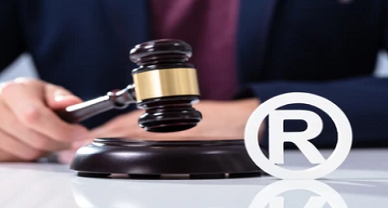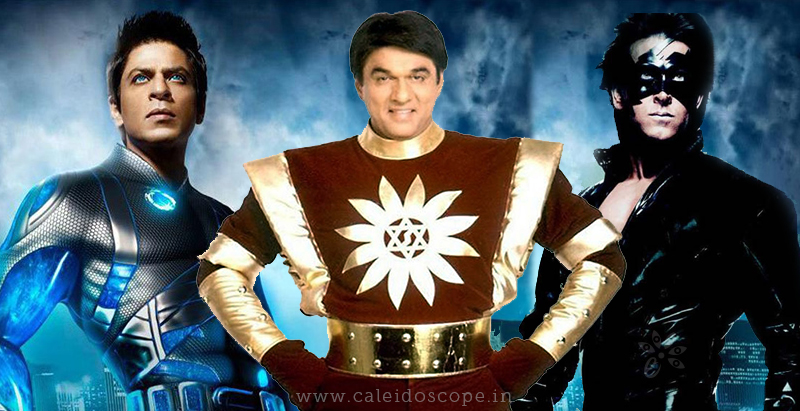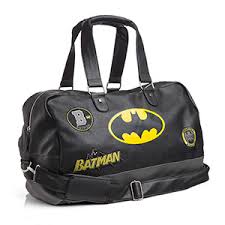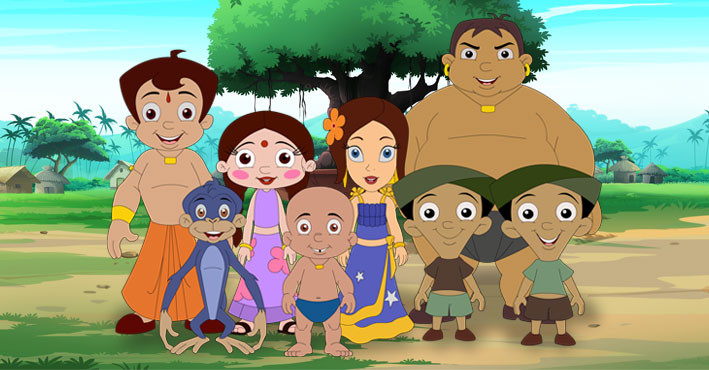| Serial No. | Trademark | Proprietor | Report | Observation |
| 1 | 7 O’CLOCK for shaving razors | Gillette U.K. Ltd., England | 1998 PTC 288 DB | It is recognized that trade mark 70’Clock is well known. As such the use of the mark in respect of tooth brush will lead to passing-off. |
| 2 | AIWA | Sony Corpn., Japan | Decision dated 26-09-2007 | AIWA is a well-known trade mark in India in respect of electronic goods. Use of this mark without due cause for any other products would be likely to deceive or cause confusion, unfair advantage and be detrimental to the distinctive character and repute of mark. |
| 3 | BAJAJ | Bajaj Electrical Limited | AIR 1988 BOM-167 | The use of a family name Bajaj by defendants was held to be an act of passing-off. The goodwill and reputation of Plaintiff company was recognized. |
| 4 | BATA & BATA FOAM for footwear | Bata India Ltd. | AIR 1985 ALLAHABAD 242 | The plaintiff company Enjoy a reputation for its products. |
| 5 | BENZ | Daimler Benz | 1994 PTC 287 | Reputation extends worldwide. |
| 6 | BISLERI | Acqua Minerals Ltd., | 2001 PTC 619 | BISLERI is well-known in the Indian market and one of the first marks introduced for bottled mineral water. The defendant who was held to have adopted the domain name Bisleri with the intention to trade on the plaintiffs reputation and goodwill, was restrained. |
| 7 | CARREFOUR | Carrefour Society Anonyme, organized under the laws of France | 2007 (35) PTC 225 | The trade mark /name used by the applicant for 47 years throughout the world has to be protected, in order to promote commercial morality and discourage unethical.trade practices. Plea of well-known trade mark is accepted. |
| 8 | CARTIER for wide variety of goods including jewellery,watches, perfumes etc. | Cartier International, B.V, Netherlands | 2003(26) PTC 160(Del) | Trade Mark Cartier in respect of various consumer goods have acquired a reputation for quality not only in India, but throughout the world. Plaintiff company has acquired brand image and personality in respect of their products. Permanent injunction granted. |
| 9 | CATERPILLAR | Caterpillar Inc., USA | 1998IPLR 326 | Name Caterpillar in respect of heavy vehicles and the name has earned reputation & goodwill world wide. |
| 10 | CHARLIE | Revlon Inc. | 1997 PTC 394 | Defendants intention was fraudulent and dishonest to encash upon reputation and goodwill of products of plaintiff. Injunction granted. |
| 11 | DR.REDDY In respect of pharmaceutical products. | Dr.Reddy Laboratories | 2004 (29) PTC 435 | Trade Mark PR.REDDY, in spite of not being registered, has acquired considerable trade reputation and goodwill in the community dealing with drugs and pharmaceuticals not only in India, but abroad also. |
| 12 | DUNHILL | Alfred Dunhill Limited, U.K. | 1999 PTC 294 | Plaintiff has prima-facie established a distinctive reputation, image and goodwill in the trade mark and trade name DUNHILL. Plaintiff has acquired global reputation. |
| 13 | ENFIELD BULLET | Enfield India Ltd. | 2006(32) PTC 397 | BULLET is a well known trade mark. It cannot be permitted to be copied even in respect of different goods. Appeals against Registrar’s decision allowed. |
| 14 | EVIAN Mineral Water | Society Anonyme Des Eavx Minerals ‘D’ Evian | 1993 PTC 103 | Evian acquired excellent reputation and goodwill world over. Said reputation and goodwill extended to India. Mark acquired high degree of distinctiveness. Para 3 & 4 exparte order. |
| 15 | FEDDERS For air conditioners | Fedders North America | 2006(32) PTC 573 | Defendants cannot be permitted to cash in on the international reputation of the plaintiffs. Injunction granted. |
| 16 | Whirlpool | Whirlpool Corporation,USA | 1996 PTC 476 | A product and its trade name transcends the physical boundaries of a geographical region and acquires a trans-border or overseas or extra-territorial reputation not only through import of goods but also by its advertisement. The knowledge or the awareness of the goods of a foreign trader and its trade mark can be available at a place where goods are not being marketed Injunction granted. |
| 17 | GLAXO | Glaxo India Ltd. | 2002 (25) PTC 105 | GLAXO is an invented word. By original adoption, registration, long and continuous user, plaintiff alone is entitled for the exclusive use of the trade mark GLAXO and no one else. |
| 18 | HAYWARDS 5000 For alcoholic | Shaw Wallace & Co. Ltd. | 2003 (27) PTC 63 | The defendants used.numeral 5000 in respect o$3e*r to cash in on vide reputation and goodwill butf. ovet the years by the plaintiffs. Interim injunction confirmed. |
| 19 | HOLIDAY INN | Holiday Inn Inc. | 2002(25) PTC 308 (DB) | Words HOLIDAY INN have been adopted by appellant to ride on global reputation of the respondent Commercial goodwill and global reputation should W be allowed to be exploited in a clandestine marine -. Appeals dismissed. |
| 20 | HONDA | Honda Motor Co. Ltd. | 2004(28) PTC 332 | Trade Mark HONDA is famous around the globe. |
| 21 | HONDA For motor cycles, motor cars etc. | Honda Motors Company Ltd. | 2003 (26) PTC1 | Plaintiffs business is of international character and reputation .Trade mark Honda has a global reputation. |
| 22 | HORLICKS For food products, malted biscuits, toffees.See also similar case | Horlicks Limited. | 2003(26) PTC 241(Del) 2002(25) PTC 504 2003 (26) PTC 241 | Suits for injunction filed against various companies by the plaintiffs, injunction orders have beer passed and most of the suits have been decreed in”0VQur of the plaintiffs. (Under Section 11(6) record of the successful enforcement of the rights in that traifi nwks is a relevant consideration) Use of mark by the defendant ‘is a flagrant and blatant attempt to imitate plaintiffs r.itfrk. |
| 23 | Hamdard | Hamdard National Foundation (Hamdard Davakhana) | 2008 (38) PTC 109 | The defendant took a calculated risk in using the HAMDARD word and eye mark; indeed its use of the eye mark points to an attempt to “free ride” on the plaintiffs reputation. |
| 24 | INTIMATE | Revlon Inc. | 1997 PTC 394 | Defendants intention was fraudulent and dishonest to encash upon reputation and goodwill of products of plaintiff. Injunction granted. |
| 25 | Infosys | Infosys Technologies Ltd. | 2007 (34) PTC 178 | The owners has established expenditure of 392 crores towards sales promotion marketing expenses and brand building during 2004-05 alone. It has established an enviable reputation and goodwill in the market nationally and international level. |
| 26 | Intel | Intel Corporation | 2007 (34) PTC 492 | Famous and well-known trademarks especially those that embody a reputation of pre-eminent excellence and quality, as plaintiffs Intel trademark, are required to be given a broad protection. |
| 27 | KANGARO | Kangaroo Industries | 2004 (29) PTC 175 | Mark declared as well known mark. |
| 28 | KIT KAT | Societe Des Produits Nestle,S.A.,1800 Vevey,Canton of Vaud,Switzerland. | Judgement in TA/1/2007/TM/DEL/(C.M.(M)) No. 148 of 2002) dt. 11/12/2009 | KIT KAT is a Well-known having trans-border reputation. |
| 29 | LETTER*T IN A CIRCLE House mark | Tata Engineering & Locomotive Co. Ltd. | 2006 (32) PTC 296 | Respondents who have established their reputation and goodwill in automobiles and several other goods are entitled to have the trade mark safeguarded. BENZ case applied. |
| 30 | Logo *M’ in the distinctive style and design of the famous golden arches | McDonald’s Corporation, U.S.A. | 1999 PTC 9 | The Logo ‘M’ is a well-known and famous logo and courts have recognized the existence of trans-border reputation. |
| 31 | MAHINDRA; MAHINDRA & MAHINDRA; M & M | Mahindra & Mahindra Ltd. | 2002 (24) PTC 121; CS (OS) 921/2013; Suit No. 2061 of 2012 | Mark is in use for five decades. The name has acquired a distinctive secondary meaning in the business or trade circles |
| 32 | MARS for chocolates, confectionery etc. | Mars Incorporate,USA | 2003(26) PTC 241(Del) 2002(25) PTC 504 2003 (26) PTC 241 | Use of mark by the defendant ‘is a flagrant and blatant attempt to imitate plaintiffs r.itfrk. |
| 33 | NIRMA See also Sl.No.32 | Shantaben 1 Karasanbhai Patel and Others | 2001 PTC 427 | NIRMA is an invented word. It has acquired great reputation. The owners have been spending huge amount on advertisement for their trade mark. Their sales in relation to various goods are mounting every year. |
| 34 | NIRMA for washing & cleaning preparations | S.K.Patel | 2004(29) PTC 634 | The principle laid down by various courts was applied namely where a regd. Trade mark has got reputation & goodwill they cannot be permitted to be used by another person even in respect of different goods. |
| 35 | NIVEA | Beiersdorf A.G. | 2009 (39)PTC 38 | Nivea is a recognized product of high quality and has international reputation and recognization. These are marks where the line between the goods and the name is blurred. The mark starts to represent the source or the person than merely a particular are specific type of goods or services. . |
| 36 | ODONIL & ODOMOS For mosquito repellants | Balsara Hygiene Products. | 2004(29) PTC 226 | Plaintiff has built up reputation in the mark, goodwill & huge sales turnover. |
| 37 | OMEGA | Omega S.A.,Bienne,Switzerland | 2003 27 PTC 327 | The Plaintiff company has been using the trade name OMEGA for more than 50 years and has enjoyed reputation for its products. |
| 38 | PANADOL & PANADOL EXTRA | SmithKline Beecham Pic. | 2001 PTC 321 | Defendants deliberately used Plaintiffs well known mark. |
| 39 | PEPSI | Pepsi Inc. | 2006(32) PTC 225 | Pepsi enjoys a huge reputation and goodwill not only in India but also internationally . |
| 40 | PHILIPS | Philips NV Netherlands | AIR 1983 P&H418 | Is a household mark and has acquired enviable reputation in India and throughout the world. |
| 41 | PIZZA HUT Logo in respect business relating to restaurants | Pizza Hut International LLC, USA | 2003(26) PTC 208(Bom) | Plaintiffs enjoy a worldwide reputation, including in India. It is settled law that if the marks/logos enjoy a trans border reputation, they are entitled to be protected against infringement and passing off in India. |
| 42 | PLAYBOY for magazine and several other goods | Playboy Enterprises Inc., | 2001 PTC 328 | Plaintiff has demonstrated its strength due to the degree of distinctiveness, fame and reputation of the trade mark Playboy. The trade mark acquired world wide circulation and publication in as many as 16 foreign countries. |
| 43 | RED BULL | Red Bull GmbH | 2003(27) PTC 164 | Trade Mark RED BULL is one of the best known trade marks not only in Austria but all over the world. Registration of domain name by the respondents was held to be in bad faith. |
| 44 | REVLON | Revlon Inc. | 1997 PTC 394 | Defendants intention was fraudulent and dishonest to encash upon reputation and goodwill of products of plaintiff. Injunction granted. |
| 45 | TACO BELL for Restaurant business | Taco Bell Corporation,USA | 2000 PTC (20) 554 | Plaintiff operated over 6000 restaurant worldwide using name taco bell as logo. Mark registered in more than 70 countries including India in classes 29 & 30. Defendants intention was to trade upon the famous mark of the plaintiffs.’ |
| 46 | TATA SEE also TATA CASE | Tata Chemicals Limited | 2003 (27) PTC 422 2004 (29) PTC 522 (Delhi) 2001(21) PTC 129 2009 (40) PTC 54 | The trade mark TATA is a household name in respect of various products all over India.TATA is a household word in India and solely and exclusively associated with the House of Tata.TATA is a well known mark.In the decision list of cases where enforcement of rights have succeeded is given. |
| 47 | TELCO | Tata Engineering and Locomotive Co. Ltd., | 2001 PTC 562 | TELCO mark has gained transborder reputation and goodwill. The mark is identified with the owners and their products throughout India as well as various countries in the world. |
| 48 | TOSHIBA | Toshiba Corporation,Japan. | 2005 (30) PTC 188 | TOSHIBA held as a well known mark and registration cannot be rectified for non-use. |
| 49 | USHA For sewing machines, electric fans etc. | Not given | 2004(29) PTC 647 | The respondent had built up long reputation and goodwill in India as well as abroad. The same cannot be permitted to be benefited by the appellant in respect of different goods or by different architecture or design. |
| 50 | VICKS VAPO RUB | Richardson Vicks Inc. | 1990 PTC 16 | Prima facie the mark as well as bottles distinctive labels and metal containers have become well known and acquired a great reputation (para 32). |
| 51 | VOLVO for automobiles | Aktiebolaget Volvo | 1998 PTC (18) 47 | Trans-border reputation is recognized by Indian courts and that actual sale in India is not necessary for a Plaintiff to establish its goodwill and reputation in India. |
| 52 | KIRLOSKAR | Kirloskar Proprietory Limited | AIR 1996 BOM-149 | The mark KIRLOSKAR used by the plaintiff had acquired a secondary meaning and had become a household word. |
| 53 | WOOLWORTH In respect of clothing etc | F.W.Woolwor th Company | 2004 (29) PTC 477 | Trans-border reputation enjoyed by the mark WOOLWORTH is not something to be not taken account of. The world wide reputation of the mark was recognized. |
| 54 | Yahoo | Yahoo, Inc. | 1999 PTC 201 | The services of the Plaintiff under the Trade Mark/Domain name ‘Yahoo’ have been widely publicized and written about globally. |
| 55 | Polo (label with device of polo player) | POLO/LAUREN COMPANY IP (USA) | Decision dated 19.12.2011 in CS(OS) 1763/2005 | Having regard to the evidence placed on record the plaintiff has established that the registered trademark of the plaintiff is a well-known mark as defined in Section 2 (z) (g) of the Trade Marks Act |
| 56 | GE Monogram | General Electric Company (USA) | Decision dated 21.12.2011 in CS(OS) 1284/2006 | It can hardly be disputed that GENERAL ELECTRIC as well as GE whether written in plain letters or in a stylized form such as monogram are well known marks of the plaintiff within the meaning of Section 2 (z) (g) of the Trade Marks Act |
| 57 | KALPATARU | Kalpataru Properties Private Limited, Santacruz Mumbai | Suit No 2976 of 2010 decided on 29th July 2011 | “The Plaintiffs have thus established that .’Kalpataru’ is a well known mark ” .”I have held above the plaintiff’s mark “KALPATARU” to be a well known mark” |
| 58 | Castrol | Castrol Limited | Judgement in Suit No. CS(OS) 1369/2006 Decision dated 18/08/2011 | High court observed CASTROL is a well known Trade Mark within the meaning of Sec. 2(1) (zg) read with Sec. 11(6) of TM Act 1999. |
| 59 | Lupin | Lupin Limited | Judgement in Suit (L) No. 3137/2011 Decision dated 05/12/2011 | The High Court observed Lupin, a Well Known Trade mark. |
| 60 | Canon | Canon Kabushiki Kaisha, Japan | Order in OA/43/2005 | The Appellate Board Concluded that CANON mark is a well known term under Sec. 11(10) of TM Act 1999. |
| 61 | Microsoft | Microsoft Corp. | Judgement in Suit No. CS(OS) 2163/2010 order dated 03/02/2014 | Court has specifically determined that Microsoft is a well-known trademarks and it is known to the most of the people. |
| 62 | Nestle | Societe des produits Nestle S.A. | Judgement in Suit No. CS(OS) 551/2010 dated 08/03/2013 | Court has specifically determined that Nestle is a well-known trademarks |
| 63 | BBC | British Broadcasting Corporation | CS (OS) 1171/2007 | Hon’ble Court has determined the mark as a well-known in Indian Territory in its observation |
| 64 | Dupont | E. I. du Pont de Nemours and Company | CS (OS) 2998/2012 | Hon’ble Court has determined the mark as a well-known in its observation |
| 65 | Candid | Glenmark Pharmaceuticals Ltd. | Suit No. 182/2013 | Hon’ble Court has determined the mark as a well-known in its observation |
| 66 | AMUL | Kaira District Co-Operative Milk Producers Union Lld. | OA/56/2011/TM/KOL | The IPAB Emphasised AMUL as a well-Known Trademark. |
| 67 | Rajnigandha | Dharmpal Satyapal Ltd. | CS (OS) 381/2012 | Hon’ble court observed that Plaintiff has established the mark as a well known trademark. |
| 68 | Louis Vuitton | Louis Vuitton Malletier | CS (OS) 270/2014 and CS (OS) 90/2006 | Hon’ble Court has determined the mark known in Indian Territory in its observation |
| 69 | GOOGLE | Google Inc. | CS(OS) 317/2011 ; CS(OS) 2907/2011 | The Court has observed Google worldwide reputation and provided the relief on this basis only. |
| 70 | HAVELLS | Havells India Limited | CS(OS) 3770/2014 | The Court accepted Havells a well known TM |
| 71 | BLOOMBERG | Bloomberg Finance, LP | CS(OS) No. 2963/2012 | Interim Order was passed in favour and same was confined vide order dated 12/02/2014 in which HC Observed Bloomberg as well-known. |
| 72 | JOHN DEERE | M/s Deere & Co. Ltd. | CS (OS) 3760/2014 | The Court observed John Deere a well known TM (para 13 of order dated 05/03/2015). |
| 73 | RAYMOND | M/s Raymond Ltd. | OA/16-17/2010/TM/CH | The IPAB observed this mark as Well-known TM. |
| 74 | FERRERO ROCHER | M/s Ferrero Spa | CS (OS) 404/2012 | The Court observed this mark as Well-known TM. |
| 75 | FORD | M/s Ford Motors Co. | CS (OS) 1710/2015 | The Court observed this mark as Well-known TM. |
| 76 | TOYOTA | M/s Toyota Motors Corporation | CS (OS) No. 62/2007 | The Court observed this mark as Well-known TM. |
| 77 | TIMBERLAND | M/s TBL Licensing LLC, | CS (OS) No. 2158/2007 | The Court observed this mark as Well-known TM. |
| 78 | SONY | M/s Sony Corporation | OA/49/2007/TM/KOL | The High Court and tribunal has observed this mark as Well-known TM. |
| 79 | ULTRATECH | M/s UltraTech Cement Limited, | Suit No. of 2288/1986 | The Court observed this mark as Well-known TM. |
| 80 | VOGUE | M/s Advance Magazine Publishers INC | Suit No. 3079/2003 | Suit No. 2860/2011 |
| 81 | VIRGIN | Virgin Enterprises Ltd | Order No.73/2005 (IPAB) | Suit No. 2860/2011 |
| 82 | SIEMENS | Ms. Siemens Aktiengesellschaft | CS (OS) No. 3785/2014 | The Hon’ble Court has determined the subject mark as a well-Known TM |
| 83 | LAVASA | Lavasa Corporation Ltd. | Suit No. 562 of 2013 | The Hon’ble court in its order dated 19/07/2013 has observed that subject mark is a well-Known Trademark |
| 84 | MOTHER DAIRY | Mother Dairy Fruit & Vegetable Pvt. Ltd. | CS (OS) 2399/2010 | High Court of Delhi, observed “MOTHER DAIRY (Blue Logo)” is a well known TM |
| 85 | MONGINIS for cakes, pastries and other bakery products | Monginis Foods Private Limited at B-60, Off Link Road, Andheri West, Mumbai 400053. | N/A | The Registrar observed that the Mark is well-known in reference to cakes, pastries and other bakery products. |
| 86 | MARUTI For Industrial Oil, Automobile, Business administration and retail outlet, Research & Development. | Maruti Suzuki India Limited, At Plot No. 1, Nelson Mandela road, Vasant Kunj, New Delhi-110070 | N/A | The Registrar observed that the Mark is well-known in reference Automobile, Business administration and retail outlet, Research & Development |
| 87 | GODREJ | Godrej & boyce MFG. Co. Ltd., at Firojshanagar, Vikhroli, Mumbai-400079 | N/A | The Registrar observed that the Mark is well-known trademark in view of its wide presence in the market |
| 88 | BIOCON For Pharmaceutical preparation, Business administration & retail outlet and Research & Development. | Biocon Limited 20th K.M. Hosur Road, Electronic City, Bangalore-560100 | N/A | The Registrar observed that the Mark is well-known in reference Pharmaceutical preparation, Business administration & retail outlet and Research & Development |
| 89 | BrahMos | BrahMos Aerospace Private Limited at 16 Cariappa Marg, Kirby Place Delhi Cantt. – 110010 | (CS (OS) No. 2655/2013 | Hon’ble Justice in the matter observed that “I have no hesitation to come to the conclusion that the trademark Brahmos is a well-Known trademark.” |
| 90 | TCS For Software development and allied serviced | TATA SONS LIMITED, Bombay House, 24 Homi Mody Street, Mumbai-400001 | N/A | The Registrar observed that the Mark is well-known in reference Software development and allied serviced. |
| 91 | LuLu for Fast Moving Consumer Goods, Hospitality, Retail services / Malls, Financial Services and Fashion Stores | LuLu International Shopping Mall Private Limited, 34-1000, NH: 47, Edapally, Kochi, Kerala – 682024 | N/A | The Registrar observed that the Mark is well-known in reference to Fast Moving Consumer Goods, Hospitality, Retail services / Malls, Financial Services and Fashion Stores. |
| 92 | INDIA GATE For Food grains and allied Products. | KRBL Limited, 5190, Lahory Gate, Delhi. 110006 | N/A | The Registrar observed that the Mark is well-known in reference to Food grains and allied Products. |
| 93 | ZEE With reference to Services i.e. Media, Entertainment, Packaging, Infrastructure, Education etc. | ZEE Entertainment Enterprises Limited, B-10, Essel House, Lawrence Industrial Area, New Delhi, 110035. | N/A | The Registrar observed that the Mark is well-known with reference to Services i.e. Media, Entertainment, Packaging, Infrastructure, Education, Processing of Precious Metals, Finance, Technology, Health care and Allied Services. |
| 94 | GARNIER Relating to ‘toiletry and cosmetic products. | L’OREAL S.A. At 14, Rue Royale Paris 75008 France. | N/A | The Registrar observed that the Mark is well-known with reference to ‘toiletry and cosmetic products’. |
| 95 | 7 ELEVEN Relating to ‘retail chain, allied products and services | 7-ELEVEN, INC. At 3200 Hackberry Road, Irving, Texas 75063, USA | N/A | The Registrar observed that the Mark is well-known with reference to ‘retail chain, allied products and services’. |
| 96 | ORAL-B Relating to oral care products | Procter & Gamble Business Services, At 1959 Upper Water Street, Suite 800, Halifax, Nova Scotia, B3J 2X2, Canada. | N/A | The Registrar observed that the Mark is well-known with reference to oral care products. |
| 97 | KESARI In respect of travel and tourism Services | Kesari Trust, Kesari Trust, At B/5, Silver Queen CHS, Soonawala Agiary Marg, Mahim, Mumbai-400 016, Maharashtra, India | N/A | The Registrar observed that the Mark is well-known with reference to travel and tourism Services. |




 Intellectual Property Rights (IPRs) are the intangible assets created by the human mind. The governments have taken immense steps by creating legal frameworks to protect these assets through various means intended for the benefit of the innovator for disclosing his / her invention. This includes the offering of monopoly to the innovator. [Image Credit: Shutterstock]The widely accepted and known IPRs are patents, trademarks, copyrights, and geographical indications, which are protected through statutory laws. This blog discusses the relatively lesser-known IPR, “Trade secret” and how it differs from the Patents.
Intellectual Property Rights (IPRs) are the intangible assets created by the human mind. The governments have taken immense steps by creating legal frameworks to protect these assets through various means intended for the benefit of the innovator for disclosing his / her invention. This includes the offering of monopoly to the innovator. [Image Credit: Shutterstock]The widely accepted and known IPRs are patents, trademarks, copyrights, and geographical indications, which are protected through statutory laws. This blog discusses the relatively lesser-known IPR, “Trade secret” and how it differs from the Patents.





